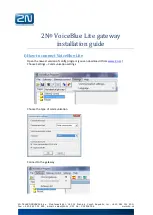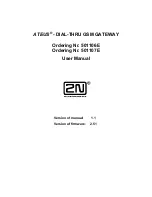
Configuration as Generic PC Interface or as Bridge
22 (62)
7.4
Settings in Generic Mode
7.4.1
Configuring the Filter
Filtering of received messages is possible with the following criteria:
•
identifier
•
frame format (Extended, Standard)
•
frame type (data, remote)
The filter works as a positive filter. CAN messages, with defined criteria in the filter list, that are
received by the CAN controller are forwarded to the Bluetooth connection.
Up to 4096 Standard filter entries (includes all possible identifiers of Standard frame format) are
supported.
For the Extended filter 300 byte memory are provided. An Extended filter entry occupies 8, 16,
24 or 32 bit, dependent on the number of CAN ID digits. 75 to 300 Extended messages can be
filtered.
CAN ID range
Memory consumption in bytes
0–7F
1
80–7FFF
2
8000–7FFFFF
3
800000–7FFFFFFF
4
For information about the available commands to configure the filter see ASCII commands in
.
7.4.2
Autostart
If the autostart mode of the device is enabled and a Bluetooth connection is established, the
device attempts to carry out a handshake to start the CAN controller.
►
To enable the autostart mode, use command
ON
.
►
Make sure, that the autostart mode is enabled with both devices.
If the Config connection is established:
►
Transmit the response to handshake messages manually.
➨
Handshake is concluded.
➨
Devices exchange CAN messages in binary format.
7.4.3
Changing the Message Format
The message format changes automatically in the following situations:
•
With command
the transmission format is switched to ASCII.
•
When the Config connection is used to transmit a CAN message to the device in ASCII
format or binary format the device switches to the same format.
•
If the device is in autostart mode and a handshake is carried out on the Config connection,
the device switches to the binary format.
►
To switch from ASCII format to binary format or to disable the reception of CAN messages,
use command
with Config connection.
CANblue II User Manual
4.01.0126.20000 EN 3.2
















































